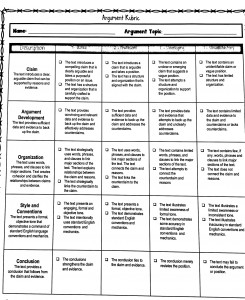1. Who’s/Whose
“Who’s” means who is or who has.
Example: Who’s in charge of ordering the supplies?
“Whose” shows ownership before a noun.
Example: Whose book is on my desk?
2. To/Too/Two
“To” is a preposition or part of an infinitive. It introduces a prepositional phrase or comes before a verb. It often answers the question where?
Example: Jason is going to the store.
“Too” is an adverb meaning also or very.
Example: Juan felt too confused to ask any questions.
“Two” is an adjective; it is the name of a number.
Example: Raphael got two A’s on his report card.
3. Where/Wear/Were
“Where” is an adverb referring to a place or location.
Example: The father said, “Where do you think you are going, young man?”
“Wear” is a verb that means put on or tire out. When it is a noun, it means weakening.
Example: The kids will wear (tire out)those shoes if they wear (put on)them too often.
“Were” is a verb; it is the plural past tense of be.
Example: The jeans were too tight for him.
4. Threw/Through/Thru
“Threw” is a verb, the past tense of throw, meaning tossed.
Example: Michael threw the ball for the winning touchdown.
“Through” is an adverb or a preposition meaning in one side and out the other.
Example: The waitress yelled, “Be careful going through the door!”
“Thru” is simply a variation of the word “through”. It is used in very informal writing only; “thru” is never considered correct in formal academic writing!
5. Weather/Whether
“Weather” is a noun referring to the condition outside.
Example: The weather has gotten gloomy.
“Whether” is an adverb used when referring to a possibility.
Example: Let me know whetheror not you are interested in the new class.
6. Than/Then
“Than” is a conjunctive word used to make a comparison.
Example: I like cheesecake better than pie.
“Then” is an adverb telling when or meaning next.
Example: Then (next), the group discussed the ways in which the new procedures would work better.
7. It’s/Its
“It’s” means it is or it has.
Example: It’s such a nice day.
“Its”shows ownership before a noun.
Example: Look at my book; its cover is ripped.
8. You’re/Your
“You’re” means you are.
Example: You’re going to need a pen for the exam.
“Your” shows ownership before a noun..
Example: Is this your pen?
9. They’re/Their/There
“They’re” means they are.
Example: I found your glasses; they’re on the kitchen table.
“Their” shows ownership before a noun.
Example: Do you have their new address?
“There” is an adverb used to show a place. Sometimes it is also used to start a thought when the true subject follows the verb.
Example: Put the heavy box right there.
I suspect that there are several files missing.
There will be no meeting today.
10. Our/Are
“Our” shows ownership before a noun.
Example: Where is our checkbook?
“Are” is a verb.
Example: Where are my keys?
CCW 1: Exercise 2
Fill in the blanks with the appropriate words.
- Don’t forget to _________________ your uniform correctly every day, rather ______________ just when a teacher tells you to.
- It is _______________ school’s policy, and we should all respect the rules.
- ___________ often students forget to tuck in _______________ shirts!
- This can be frustrating for teachers who have _______ constantly remind them.
- So ________________ going to be the next one to be caught with ______________ shirt un-tucked?
- Rather _____________ having to be reminded, it would be great if all students had tucked in shirts before even walking ______________ the school doors in the morning!
- But sometimes ________ hard to remember to tuck in ________ shirt when ________________ in such a rush to get to school in the morning.
- Especially when the ___________________ outside is cold and you’ve got a coat on!
- That reminds me! Please don’t forget to ___________ a coat when _________ this cold!
- __________________ you like them or not, _______________ meant to keep you warm!
- Be an example to _______________ friends! ______________ all watching you!

